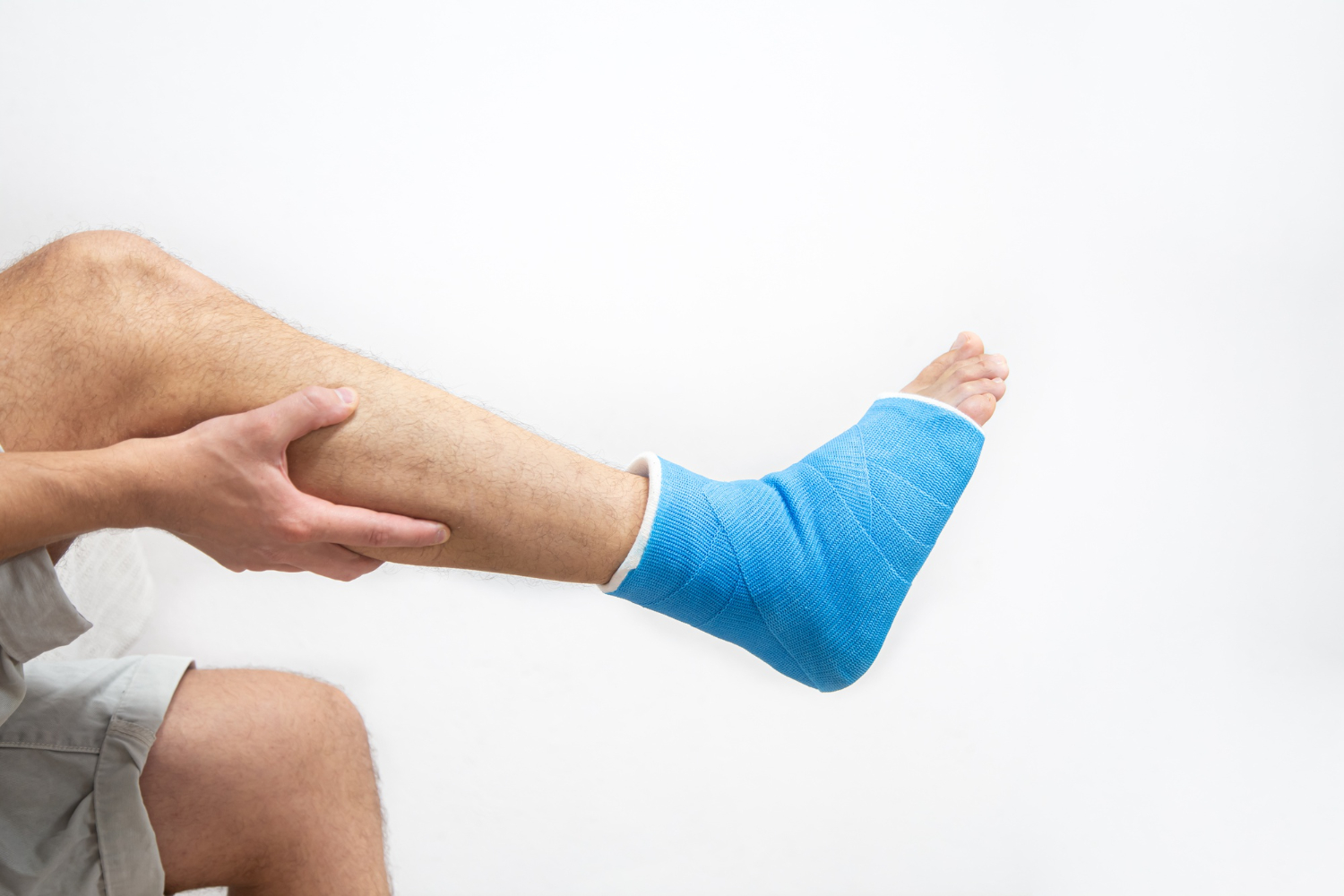Understanding Common Ankle Injuries: From Sprains to Achilles Ruptures and How to Treat Them
Ankle injuries are among the most common musculoskeletal injuries, affecting people of all ages and activity levels. From a simple sprain to more serious conditions like fractures or Achilles tendon ruptures, these injuries can significantly affect your mobility and quality of life. Whether caused by a misstep on the stairs or during high-impact sports, it’s important to understand these injuries, recognize the symptoms, and seek timely treatment to prevent long-term complications.
In this blog, we delve deep into four major ankle injuries—ankle fractures, ankle sprains, Achilles tendonitis, and Achilles tendon ruptures—covering their symptoms, causes, diagnostic procedures, treatment options, and the importance of rehabilitation.
🔹 1. Ankle Fractures
What is it?
An ankle fracture occurs when one or more of the bones that make up the ankle joint (tibia, fibula, or talus) break due to trauma or excessive stress. The fracture can range from a small crack to a complete break that displaces the bone.
Symptoms:
- Immediate and sharp pain
- Swelling and bruising
- Deformity in the ankle area
- Inability to bear weight or walk
- Bone protrusion in severe cases
Common Causes:
- Falls from a height
- Twisting injuries during sports
- Motor vehicle accidents
- Missteps or direct impact trauma
Diagnosis:
- X-ray is the first-line imaging to confirm a fracture.
- CT scan or MRI may be used for complex or compound fractures to assess ligament and soft tissue damage.
Treatment Options:
- Non-surgical: Casting or splinting for stable fractures
- Surgical: For displaced or complex fractures requiring internal fixation (plates, screws)
- Recovery: May take 6–12 weeks, followed by physiotherapy
🔹 2. Ankle Sprains
What is it?
An ankle sprain happens when the ligaments—tough bands of tissue connecting bones—are stretched or torn, usually due to rolling or twisting of the foot.
Symptoms:
- Pain (mild to severe)
- Swelling and tenderness
- Bruising around the ankle
- Difficulty in walking or bearing weight
- Stiffness or instability in the joint
Common Causes:
- Sudden twist or roll of the ankle
- Sports activities involving jumping or quick changes in direction
- Walking or running on uneven surfaces
Diagnosis:
- Physical exam and patient history
- MRI if ligament tears or chronic instability is suspected
Treatment Options:
- R.I.C.E. therapy: Rest, Ice, Compression, Elevation
- Bracing: Ankle supports or braces to stabilize the joint
- Medications: Painkillers and anti-inflammatory drugs
- Rehabilitation: Stretching and strengthening exercises to prevent recurrence
🔹 3. Achilles Tendonitis
What is it?
Achilles tendonitis is the inflammation of the Achilles tendon—the thick band connecting the calf muscles to the heel bone. It is typically an overuse injury.
Symptoms:
- Pain and stiffness along the back of the heel, especially in the morning
- Swelling or thickening of the tendon
- Tenderness to touch
- Pain that worsens with activity
Common Causes:
- Repetitive strain from running or jumping
- Wearing unsupportive footwear
- Tight calf muscles or a sudden increase in activity level
- Flat feet or biomechanical abnormalities
Diagnosis:
- Physical examination
- Ultrasound or MRI to detect inflammation or micro-tears
Treatment Options:
- Rest and ice application
- NSAIDs to reduce inflammation
- Heel lifts or orthotics to reduce strain
- Eccentric exercises and physical therapy
- In chronic cases, platelet-rich plasma (PRP) injections or surgical intervention may be considered
🔹 4. Achilles Tendon Rupture
What is it?
A rupture of the Achilles tendon is a complete tear of the tendon and is usually sudden and dramatic, often occurring during physical activities.
Symptoms:
- Sudden, severe pain in the back of the ankle or calf (often described as being “kicked” in the heel)
- A popping or snapping sound
- Difficulty walking or standing on tiptoe
- Swelling and weakness
Common Causes:
- Explosive movements (e.g., jumping, sprinting)
- Sudden pivoting
- Degeneration due to age or untreated tendonitis
- Poor conditioning or overexertion
Diagnosis:
- Thompson test (calf squeeze test)
- MRI or ultrasound to confirm the rupture and assess severity
Treatment Options:
- Surgical repair is often recommended for active individuals
- Non-surgical methods involve casting or bracing the foot in a downward position
- Rehabilitation is essential for restoring strength, flexibility, and function
🏥 When to Seek Medical Help
It’s crucial not to ignore ankle pain or assume it will heal on its own. Seek immediate medical attention if:
- You hear a pop or snap at the time of injury
- You experience severe pain, inability to bear weight, or visible deformity
- Pain and swelling persist beyond a few days
- There’s instability or frequent spraining
Delays in diagnosis or treatment can lead to chronic ankle instability, joint arthritis, or permanent tendon damage.
💪 Why Rehabilitation is Important
Rehabilitation is a key component of healing and regaining function after an ankle injury. It helps:
- Restore mobility and flexibility
- Rebuild muscle strength and joint stability
- Prevent recurring injuries
- Safely return to daily activities or sports
Skipping rehab can result in incomplete healing and long-term problems such as stiffness, imbalance, or weakness.
✅ Conclusion
Understanding the different types of ankle injuries—from sprains to Achilles tendon ruptures—can help you respond appropriately if you or a loved one gets injured. Early diagnosis, professional treatment, and consistent rehabilitation are crucial for a full recovery.
If you’re experiencing ankle pain or dealing with a recent injury, consult a specialist without delay.
Dr. Alagappan is one of the best doctors for ankle injuries at Hande Hospital, Chennai. With extensive experience in treating a wide range of foot and ankle conditions, Dr. Alagappan offers personalized care that combines accurate diagnosis, effective treatment, and focused rehabilitation strategies.
📞 For more details regarding regular check-ups, kindly contact:
Hande Hospital: +91-98410 11390
Hande Medical Centre: +91-99625 22667
Visit us in person or contact us for more information and to schedule an appointment.
